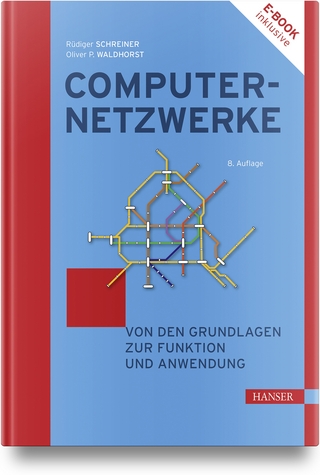
Optical Networking
Springer London Ltd (Verlag)
978-1-85233-641-7 (ISBN)
- Keine Verlagsinformationen verfügbar
- Artikel merken
1 Boundaries of the Optical Network Layer in Future Communications Networks.- An Overview of the Optical Network Layer.- Attributes of the Next Generation Sprint Optical Transport Network.- Internetworking with Domains and All-Optical Islands.- The Optical Layer. What Strategy for the Future?.- Future Optical Metropolitan Area Networks.- KomNet — A Modular Platform to Asses Optical Networking Techniques and Components.- Performance Analysis of Wavelength Division Multiplexing Mesh Networks.- 2 Management of the Optical Network Layer.- Optical Transport Network Management.- Optical Layer Protection and Restoration.- An Overview of Optical Network Standards.- Proposal for a Multivendor Multitechnique NM Architecture.- Supervisory Management and Lightpath Restoration for Wavelength Routing Networks.- The “Moon” Light on TMN and OAM Concepts.- 3 Fiber, Optoelectronic and Integrated-Optic Devices and Components for Switched/Unswitched Optical Networks.- Functional Planar Waveguide Devices.- Micro-mechanical Approaches to Optical Network elements.- Optical Components in Silica-on-Silicon Technology: a European Perspective.- Fast Tunable Filter for Packet-Switched WDM Optical Network.- Highly Efficient Phosphosilicate Raman Fiber Lasers for Optical Amplifiers Pumping.- 4 System Technologies in the Networking Scenario.- Fiber Grating Dispersion Compensators for Advanced WDM Systems.- 40 Gbit/s TDM System Technologies and Field Trials.- WDM Soliton Transmission in Dispersion-managed Links for Long Distance High Capacity Links.- Local/Breathing Solitons and Pseudo-Linear Transmission in Non-Zero Dispersion Fiber.- A Survey of Dispersion Maps for 10 Gb/s Terrestrial Transmissions, with Network Applications.- Optimisation of the Dispersion Map of Compensated Standard-Fibre WDM Systems to Minimise Distortion due to Fibre Nonlinearity.- 5 Switching and Access: Switched WANs Switched/Unswitched LANs.- WDM-on-WDM: Extending the Functionality of WGR-based Passive Optical Networks.- WDM Systems for the Access Network.- WDM in Corporate Networks.- HORNET: A Packet-Switched WDM Metropolitan Area Network.- Optical Switching for End-to-end Packet Communications and its Potential Advantages over Electronic Switching.- Management of Dynamically Configurable WDM Hybrid Fiber Access Networks.- An Optical Packet Switch with a Multistage Buffer for IP Traffic.- Robust Optical FFH-CDMA Communications: Coding Avoids Frequency/Temperature Controls.- 6 The EU sponsored DAWRON project.- Matrix Analysis for the Performance Evaluation of’WDM Systems with and without Dispersion Compensation.- A Matrix Approach for Transmission Penalty Evaluation in Optical Heterodyne CPFSK.- Cross-Phase Modulation Distortion in Multi-Span Dense WDM Systems.- PM/AM and AM/PM Conversions in Linear Optical Fibers.- SPM/XPM-induced Intensity Distortion in WDM Systems.- Authors’ Index.
| Erscheint lt. Verlag | 18.8.1999 |
|---|---|
| Zusatzinfo | XIV, 400 p. |
| Verlagsort | England |
| Sprache | englisch |
| Maße | 155 x 235 mm |
| Gewicht | 640 g |
| Themenwelt | Mathematik / Informatik ► Informatik ► Netzwerke |
| Naturwissenschaften ► Physik / Astronomie ► Optik | |
| Technik ► Elektrotechnik / Energietechnik | |
| Technik ► Nachrichtentechnik | |
| ISBN-10 | 1-85233-641-2 / 1852336412 |
| ISBN-13 | 978-1-85233-641-7 / 9781852336417 |
| Zustand | Neuware |
| Haben Sie eine Frage zum Produkt? |
aus dem Bereich


